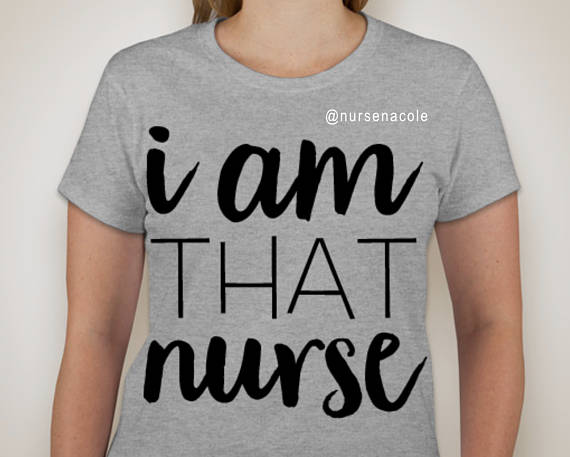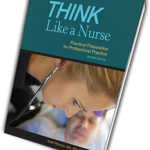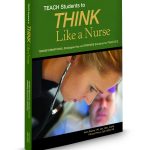
In last week’s blog, I shared how it is the little things that a nurse does or does not do that are the BIG things that can make a difference to the patient.
Today, I give nurse educators the opportunity to share what they see from their vantage point and want to thank them for taking the time and effort to contribute!
Their insights are shared in the spirit to strengthen and improve nursing practice, not to point out what nurses are doing wrong that is not best practice.
So whether you are a student, a nurse in practice, or teaching students here are some practical ways to avoid the label of being “that nurse!”
It’s Not About the Tasks
“That nurse” is a nurse who is all about the tasks. They think when their task list of nursing assessment, VS, meds and charting is complete, they are done for the shift and can sit around on their phones at the nursing station and takes little to no initiative to offer help to other team members or to spend quality time with their patient.
I always tell my nursing students that there is always something that needs to be done. Nail care, oral care, repositioning, walking rounds, and being present to your patients. As long as there are patients on the unit, there truly is never downtime on a shift!
-Elizabeth McGinnis, Program Coordinator & Associate Professor of Nursing. Ashland Community and Technical College, Ashland, Kentucky
Incomplete Physical Assessment
“That nurse” is a nurse who does not complete a thorough physical assessment of their patient.I was recently a patient undergoing a surgical procedure. None of the nurses (nor physicians mind you) did a physical assessment.
They did not listen to my heart, lungs, or abdomen. I imagine they checked off “lungs clear bilaterally, S1, S2 heard, and bowel sounds present in all 4 quadrants” in the chart. This is obviously not best practice as they would have no baseline for comparison if something were to go wrong.
-Beth A. Pratt, Ph.D., RN, Instructor, Florida Atlantic University
“That nurse” is a nurse who listens to lung or heart sounds over clothing and not listening to lung sounds over the patient’s back whenever possible.
-Pamela Rickbeil, MS, RN, St. Cloud State University and St. Cloud Technical and Community College, St. Cloud, Minnesota
Patient Care Issues
-Libby Opell RN, MSN, Nursing Instructor, Ivy Tech Community College, Wabash Valley, Indiana
It is not uncommon to find patients with layers of dried film of plaque on the tongue and teeth that builds up if routine care is not performed at least once a shift. Use the suction toothbrushes which do a great job when used!!!
Don’t Scan the Patient ID Bands
“That nurse” is a nurse who does not scan the patient’s ID bands when administering medications. Instead, the nurse does a workaround and will place patient labels on their report paper and scan the label outside the room and not the patient.
Though it is a timesaving shortcut, this is how med errors happen and will put the patient at risk of receiving the wrong medication. Instead be sure to consistently use the technology to protect your patients from medication errors!
-Karen Oaks, MSN, FNP-BC, Simulation Coordinator & Assistant Professor, Averett University School of Nursing
Contaminate IV Site
“That nurse” is a nurse who cleans an IV insertion site and then inadvertently touches it after wiping. Remember to let the site dry and keep it clean. If it’s touched it’s contaminated and can cause an infection, yet this practice persists. Another thing I observe are nurses who expose a finger out of a glove to feel the vein better and not putting the glove back on when they insert the IV.
These actions are best practices taught in NURSING 101 ….methods we need to perform correctly for the sake of patients and to role model correct practices to students and new nurses.
One Nurse’s Story…the Little Things are Big Things
In Closing
Reality shock will impact new nurses after they graduate who will be overwhelmed at times with the numerous demands they face caring for and being responsible for more patients than they ever had a student.
The temptation that new graduates and every nurse in practice experience are cutting corners to save time. The problem is that these shortcuts can quickly impact patient safety and must not be done.
Take a minute and reflect and see if you have made the “slow fade” of sliding into habits that are not best practice.
Today is a new day. Make it a priority to resolve to pursue excellence as a nurse and do what is needed today to avoid being “that nurse” in clinical practice!
Related Past Blogs
- Questions to Ask Student to Help them Think More Like a Nurse
- How to Safely Care for Multiple Patients
- How to Quickly Prepare for Patient Care
What do you think?
What shortcuts have you observed in practice that would help students not be labeled as “that nurse”?
Comment below and let the conversation begin!
Want More?
 Today’s blog is derived in part from my student text THINK Like a Nurse: Practical Preparation for Professional Practice.
Today’s blog is derived in part from my student text THINK Like a Nurse: Practical Preparation for Professional Practice.
This book has been endorsed by Dr. Patricia Benner and has been successfully adopted by dozens of programs across the country!
Contact me if you are a nurse educator and would like a faculty eBook preview copy to see for yourself how this text can help your students get practice ready!
A New Resource to Help Nurse Educators
There is no such thing as a born nurse educator. It takes time and implementing educational best practice in your program.
TEACH Students to THINK Like a Nurse. is filled with numerous best-practice strategies and time-saving tools to teach students to think like a nurse in the class and clinical settings!
Keith Rischer – PhD, RN, CEN
As a nurse with over 35 years of experience who remained in practice as an educator, I’ve witnessed the gap between how nursing is taught and how it is practiced, and I decided to do something about it! Read more…
The Ultimate Solution to Develop Clinical Judgment Skills
KeithRN’s Think Like a Nurse Membership
Access exclusive active learning resources for faculty and students, including KeithRN Case Studies, making it your go-to resource.




